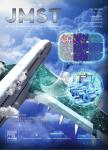Electrochemical Corrosion Behavior of Nanocrystalline Materials-a Review
Electrochemical Corrosion Behavior of Nanocrystalline Materials—a Review作者机构:State Key Laboratory for Corrosion and Protection Institute of Metal Research Chinese Academy of Sciences Shenyang 110016 China
出 版 物:《Journal of Materials Science & Technology》 (材料科学技术(英文版))
年 卷 期:2010年第26卷第1期
页 面:1-14页
核心收录:
学科分类:07[理学] 070205[理学-凝聚态物理] 08[工学] 080501[工学-材料物理与化学] 0805[工学-材料科学与工程(可授工学、理学学位)] 0702[理学-物理学]
基 金:supported by the National Natural Science Foundation of China under grant Nos. 50801063 and 50671113
主 题:Nanocrystalline materials Electrochemical corrosion Review
摘 要:Nanocrystallization significantly influences the electrochemical corrosion behaviors of metals/alloys in liquid system. In active dissolution, nanocrystallization accelerates the corrosion reactions. If the corrosion products are dissoluble, the corrosion rate is increased by nanocrystallization; if the corrosion products are insoluble, the corrosion rate is decreased on the contrary because the corrosion products act as a block layer to delay the dissolution. In passivation, nanocrystallization changes the composition of the passive film, and results into different morphology and growth process of the passive film, both of which improves the formation of compact film and influences the semiconductor property. It influences the passivation depending on fast element diffusion and special adsorbed ability. The small grain size improves the element diffusion, which leads to the different composition of passive film (passive elements enrichment such as Cr, Ti). The small grain size also changes the surface condition, which influences the ions adsorption. All increase the corrosion resistance of materials. In local corrosion, nanocrystallization increases the unstable points on the surface of the materials, which increases the possibility of local corrosion. However, the excellent ability of element diffusion helps heal the local corrosion points, which inhibits the growth of the local corrosion.



